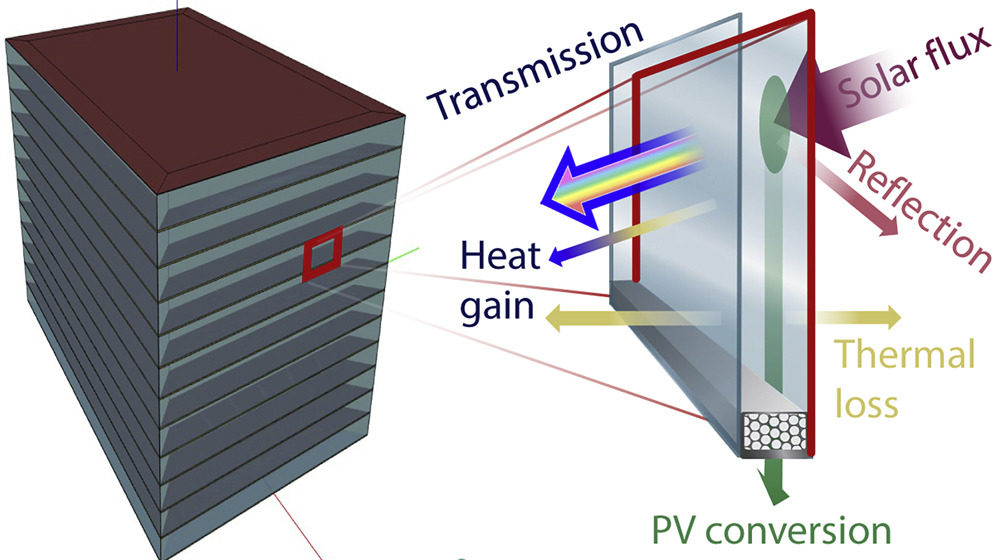From pv magazine Global
NREL scientists have developed a mesoscopic building energy model to compare next-generation building glazing technologies. They have found that PV glazing technologies can be easily integrated into existing double- or triple-glazed substandard windows to significantly reduce building energy use and carbon emissions.
The team created glaze units using three types of PV window technology: a non-wavelength-selective technology using perovskite-based thin-film; a wavelength-selective technology, or so-called transparent PV; and dynamic PV technology, which is a recent innovation combing dynamic glazing technology with PV conversion.
They reportedly translated the nanoscopic glazing unit simulations to large-scale building energy simulations using the EnergyPlus and OpenStudio physics-based building energy simulation tools. They used weather data inputs from the Typical Meteorological Year database to simulate the energy consumption profiles of buildings in terms of heating, cooling, and lighting in 15-minute intervals over the course of a year.
The results showed that “PV glazing with a power conversion efficiency as low as 6% reduces energy use by more than 30%,” according to the researchers. They said increases in efficiency translate into additional energy use reduction. At efficiencies of 12.5%, perovskite thin-film and transparent PV technologies reach 42% energy-use reduction when integrated into double- or triple-glazed windows.
Dynamic PV glazing reaches almost 50% energy savings and “has the highest potential savings amongst PV technologies,” according to the researchers. However, they noted that the technology has only achieved an efficiency of 11% in a lab setting, so it needs further development to reach its full potential.
The results also showed that dynamic PV glazing generates more electricity in hotter months, with more than 1,200 gigajoules (GJ) of generation in June and September, but less than 200 GJ from December to January.
“In contrast, static wavelength-selective PV consistently generates more than 500 GJ each month but never exceeds 1,000 GJ for any single month,” said the researchers, who shared their findings in “Photovoltaic windows cut energy use and CO2 emissions by 40% in highly glazed buildings,” which was recently published in One Earth.
This content is protected by copyright and may not be reused. If you want to cooperate with us and would like to reuse some of our content, please contact: editors@pv-magazine.com.








By submitting this form you agree to pv magazine using your data for the purposes of publishing your comment.
Your personal data will only be disclosed or otherwise transmitted to third parties for the purposes of spam filtering or if this is necessary for technical maintenance of the website. Any other transfer to third parties will not take place unless this is justified on the basis of applicable data protection regulations or if pv magazine is legally obliged to do so.
You may revoke this consent at any time with effect for the future, in which case your personal data will be deleted immediately. Otherwise, your data will be deleted if pv magazine has processed your request or the purpose of data storage is fulfilled.
Further information on data privacy can be found in our Data Protection Policy.